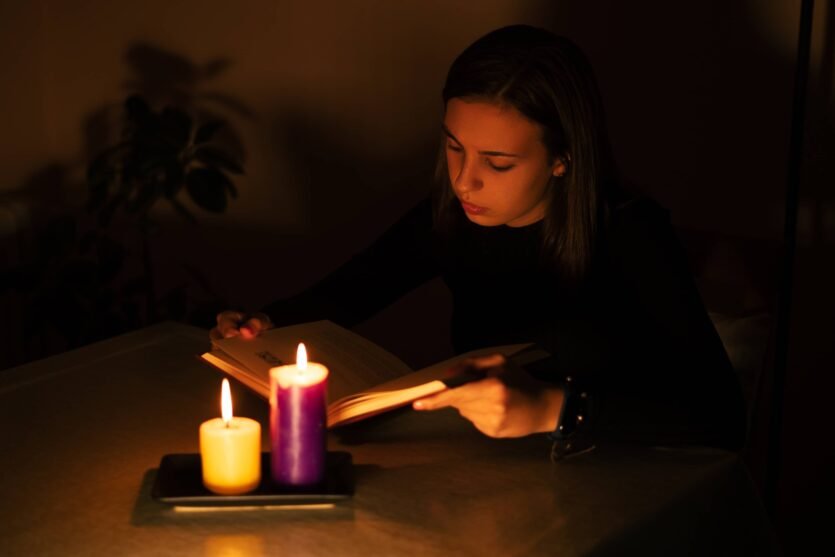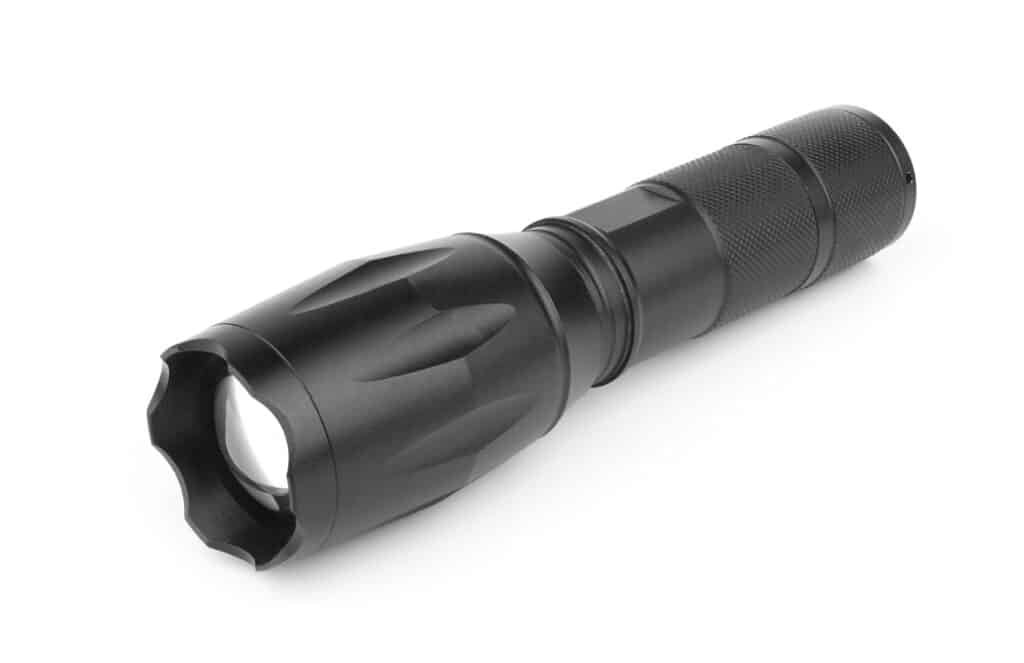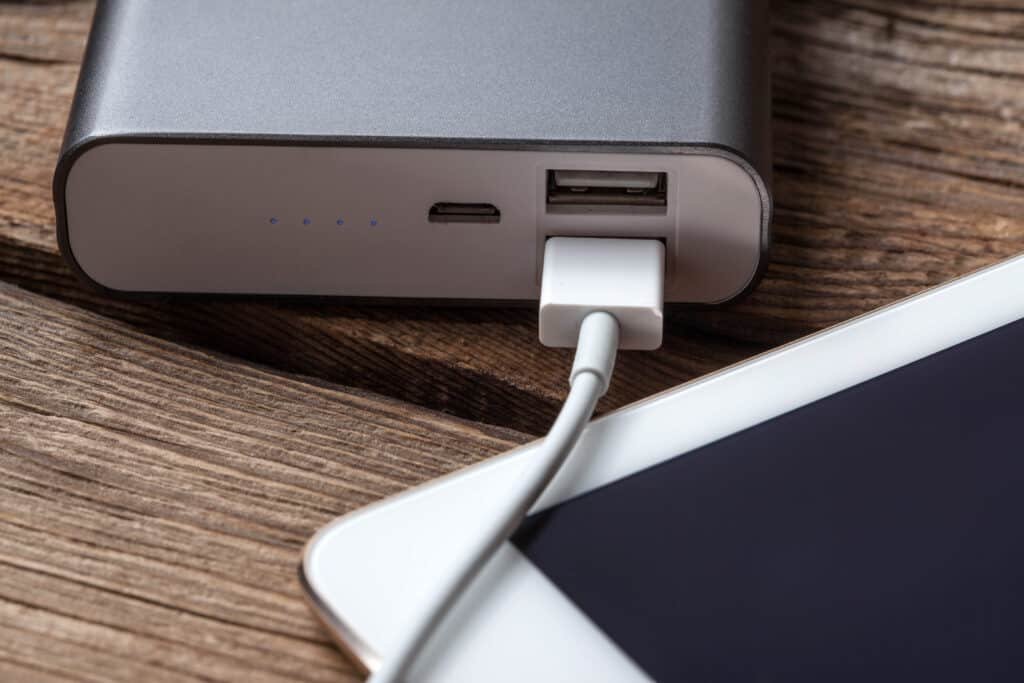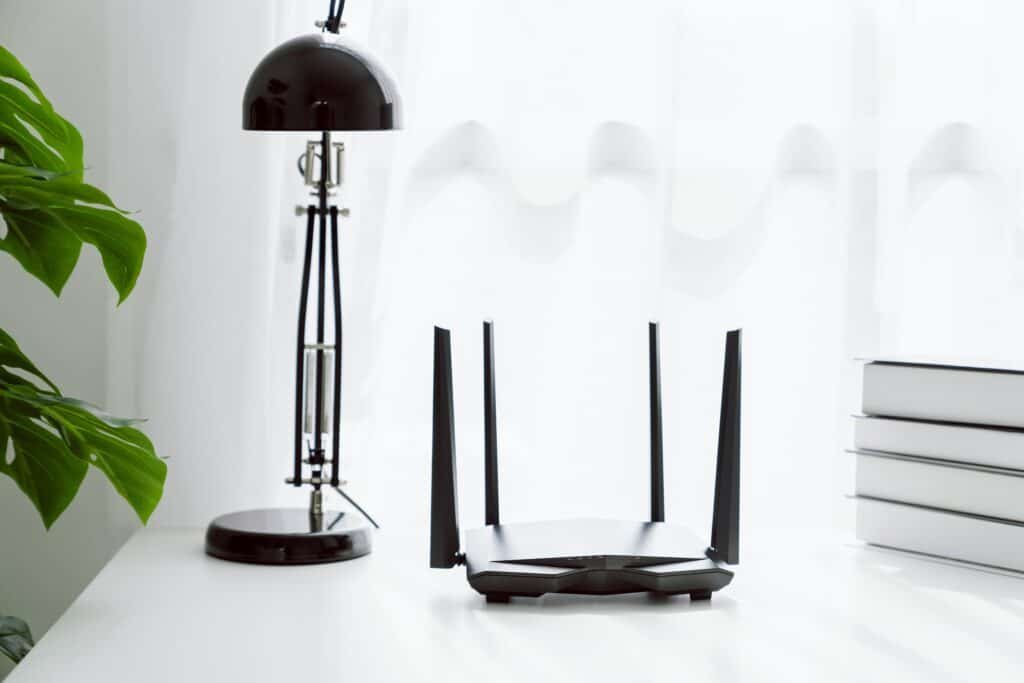12 best ways to prepare for a power cut

We may earn a small fee from the companies mentioned in this post.
With rising energy bills and potential winter power cuts looming, many people are wondering how to prepare for a potential power cut this winter. This article details the 12 best ways to prepare for a power cut and what you need to consider. This article also includes various power outage tips and tricks.
The global energy crisis has been developing over the past year, mostly due to Russia’s invasion of Ukraine and a subsequent squeeze on gas supplies into Europe. This has left many countries struggling to meet their energy needs, and this has led to reports that the UK faces potential power cuts this winter. It is therefore important that everyone understands how to prepare for power outage in winter.
The UK hasn’t experienced widespread power cuts due to a shortage of fuel since the 1970’s, but this seems a distinct possibility this winter. Whether it be downed power lines or planned outages, it is sensible everyone has a back up plan for this potential yet significant disruption. It should be considered important to understand how to prepare for a long-term power outage. As many ask, is the power grid going to shut down 2022?
The following article outlines the 12 best ways to prepare for a power cut.
1. Assembling an emergency kit
When the light goes out, you don’t have much choice but to sift through supplies. It’s very difficult to reach into a drawer or through a closet because the stuff is hidden from sight. Arrange the necessary items into a small container. consider this your emergency kit containing all your important items in a power outage. Ensure you include your emergency contacts that can be easily read with a torch or on your power smart phone.
Plastic containers or duffel bags are an excellent choice. Make your kits accessible and ensure everyone in the house is aware of its location. It would probably be more appropriate if you put the container on the first floor of the house. You should also consider storing one gallon of fresh water, even if the power is off for a short time.

You may consider purchasing candles in the event of a prolonged power outage.
However, candles can be very dangerous and should be avoided if possible as they present a fire risk. Consider purchasing battery powered lamps that can last for many hours when pre-charged. Remember a light source that runs on battery power is far safer than candles especially if you have small children or pets
External power banks can easily charge smartphones that can be used as lights and will help you stay safe this winter.
You can buy power banks from Argos for £29.99. You can also buy another similar range on Amazon. Keep it fully charged for immediate use.
Results for portable power bank (argos.co.uk)
2. Have torches (flashlights) and batteries for everyone
When deciding what to do during a power outage at night everyone turns to flashlights (torches). Torches provides an added level of security when controlling power cuts. When you prepare your emergency kits, you can add one flashlight per person on your list.

Torches come in a variety of sizes and charging mechanisms. Consider storing some with traditional batteries and some that can be charged via a USB charging adapter.
It is also useful to store large and small torches for indoor and outdoor purposes.
Store the torches in every large room in your house, in a location everyone is familiar with. Remember to purchase fresh batteries for those torches that are not rechargeable. It is always desirable to store a significant number of various spare batteries. Spare batteries are essential in a power outage but ensure they reflect the equipment you wish to power.
3. Buy a food thermometer
Food safe thermometers are useful in determining the temperature of perishable food stored within your fridge during outages. If you’re uncertain whether a particular meal will be safe, the temperature on a food thermometer will tell you. It may also be prudent to store non perishable food which may be considered essential in a prolonged power outage that may affect food within a fridge freezer.
In case of a prolonged power outage (such as damage to power lines), you may also wish to consider stocking your cupboards with enough non perishable food to last a couple of weeks if necessary. This also includes simple items such as bottled water, as power outages can sometimes affect critical services. Simple things like tinned foods and bottled water can be an essential in a prolonged power outage.
4. What to do with a Fridge Freezer during a power cut
If a power outage is prolonged there is the potential that your fridge freezer may not stay cold and defrost causing water to seep out and food to defrost. It might be wise to consider reducing the amount of frozen food you stock during the period of potential power cuts and to keep the door closed during a power outage. A full freezer may result in more water spillage.
Place towels around the floor of the fridge freezer and a bowl inside the freezer, as this will collect the water discharge and prevent accidents caused by a slippery floor.
5. Stock up on low-tech gadgets
There is a little more to say about the low-tech solution. Torches must always be used if electricity is out late afternoon or evening – keep a few handy and add extra batteries. Although candles may be useful, they must always be supervised or kept under control as they’re dangerous for fire and cause a lot of damage.
It’s better to rely on daylight to provide energy in the evenings by lighting a battery powered lamp. You may also consider purchasing a battery powered radio (with extra batteries), which may be essential during a power outage. It may also be prudent to purchase or update a first aid kit, which may prove very useful in an emergency.
6. Ensure you keep your mobile phone fully charged
When a power outage occurs it’s important to have a communications device and a pocket torch, a smart phone (mobile/cell phone) provides both these functions. If you lose power to your broadband router, you will be dependent on your smart device to access the Internet. Internet access will be essential when determining the potential duration of the outage.
To ensure your mobile phone is fully charged during any planned or unplanned power outage (this is essential for key contacts), plug your device into a power charger when at home. You may also wish to purchase a power bank that can be used to charge your smart phone in an emergency.
7. Prepare cash, documents, and fuel
If you need to shop for essential groceries and necessities, then some cash will be helpful if credit card machines do not work, or if card readers are down. It is advisable to make sure your car is equipped to carry enough fuel as petrol stations (including charging stations) require electricity for their operation.

8. Identify essential items before a power cut
The UK and for that matter the rest of the world is a very different place to the 1970’s, technology is everywhere, and that requires a significant amount of power to function.
Flat screen TV’s, laptops, tablets, gaming computers, SKY TV, music systems, voice activated control systems and broadband routers are now considered everyday electrical items and are all hungry for power.
Rather than panicking days or hours before a power cut occurs, people should prepare for a series of outages that will render all their home appliances, including lighting and perhaps heating inoperable. You should prepare for power outages of up to 24 hours in extreme cases.
9. The Priority Services Register
The Priority Services Register is a free support service that makes sure extra help is available to people in vulnerable situations, who may require extra support to remain safe during any planned interruptions of power, even if only for a few hours.
You are eligible if you:
- have reached your state pension age
- are disabled or have a long-term medical condition
- are recovering from an injury
- have a hearing or sight condition
- have a mental health condition
- are pregnant or have young children
- have extra communication needs (such as if you don’t speak or read English well)
- need to use medical equipment that requires a power supply
- have poor or no sense of smell
- would struggle to answer the door or get help in an emergency.
For more information visit the Priority Services Register on the Ofcom website.
10. Take steps to minimise the impact of a power cut?
Consider what you would do if you knew your water was going to be cut off for a couple of days, always ensure you have a well thought out back up plan.
You would fill kettles, containers and even baths that could be boiled and used throughout the period of no supply. Why not apply this technique to a power cut. Charge your battery devices in advance and keep them charged continuously.
11. Keep your tech running
During a power outage it is important to be able to communicate with the outside world. To ensure your mobile phone is charged you may require a portable power source. While most mobile phones have reasonable batteries that are strong enough to withstand an extended power cut, these can soon run down if in constant use. You may wish to consider purchasing a power bank to ensure your critical communications devices are operational during a power cut. Anker’s popular Powerbanks are highly regarded and come in three dimensions: 5,000mAh (for £18.99, 12,000mAh for £22.99 or 20,000mAh for £54.99. This is more than capable of charging your mobile phone and your tablet.

In general smartphones have capacity around 500 mAh, laptop batteries can reach around 5,000 mAh, tablets have up to 10,000 mAh.
12. Consider using an Uninterrupted Power Supply (UPS) to keep your essential devices running during a blackout
A UPS is a great way to store electricity and have it available when you need it and to run your priority services. These units can hold a considerable charge that can run numerous home appliances. You can find these devices at most electronic stores or online.

Datacentres have been using this method for years to provide continuous power to critical servers and priority services during unplanned power outages. You don’t necessarily require portable generators to run a small selection of essential consumer items during a power cut that may only last a few hours.
Consider what you would require if the power was cut for an evening, make a list of the minimum basic requirements and then work out the devices you wish to power, it is always useful to have a plan.
You should make a list of your priority services, such as your main household TV as this is often considered a critical item of equipment during a power outage. Connected devices such as satellite receiver, or a gaming console may also be deemed important during a blackout.
A broadband router is another critical piece of equipment that should be considered during a power outage.

In order to calculate the battery required to run a critical electrical item during a power outage, you will need to know the wattage of the device. This information can be found on the back of the TV, Router or Satellite receiver, in the owner’s manual, or even on the Internet. Once you have the wattage, you can use a battery calculator to determine the size of battery required.
A typical TV (50-inch LED) = 60 watts. There are numerous factors such as the age and how the TV is used, volume level and brightness that will affect the power consumption.
| Size of TV | LCD (watts) | LED (watts) | OLED (watts) |
| 30 | 60 | 40 | N/A |
| 40 | 120 | 45 | N/A |
| 50-55 | 150 | 60 | N/A |
| 60-65 | N/A | 80 | 110 |
| 70-80 | N/A | 100+ | 130 |
For Example: A TV drawing 100 watts of power, a Satellite Decoder running 50 watts and a typical broadband router drawing 50 watts of power = 200 watts of power per hour or W/H.
A power source or UPS with a 1900-watt capacity at 50% load (you can’t run these devices at 100%) would provide power for 4-5 hours – 100W (TV) + 50W (Satellite) + Router 50W = 200W x 4 (hours) = 800W (40% of 1900W capacity UPS).
As you will probably want to plug other devices into your UPS, you will need to consider the total power consumption of each device.
| Appliance | Average wattage / power load per item |
| Broadband Router | 20 |
| Laptop (15in) | 80 |
| Desktop | 300-400 |
| Gaming PC | 1000+ |
| Phone Charger | 10 |
| Standard lamp | 20 |
| Satellite Decoder | 50 – 80 |
| Radio | 15 |
Note: This data may vary dependent on device so always check the specific power consumption of each device you plan to connect to a UPS.
Items not suitable for a UPS
I hope this article has answered some of your question regarding how to prepare for a power cut. Remember it’s important to be prepared and to have a back up plan for every perceived eventuality, even if the power is only out for a few hours.
If emergency supplies of fuel are running low, and a power outage strikes, planning ahead could save you a lot of hassle if the unthinkable occurs. Think what you would do if the power was out for more than 24 hours!
Preparing for a power outage before shortages occur will provide peace of mind as we head into a winter where fuel supplies are uncertain.
Checkout our other blogs
With over three decades of experience in the heart of London’s financial sector, I have dedicated my career to the pursuit of robust cybersecurity practices and IT leadership. As a Certified Information Systems Security Professional (CISSP), Certified Information Security Manager (CISM), Certified Chief Information Security Officer (C|CISO), Certified Ethical Hacker (CEH), and Computer Hacking Forensic Investigator (CHFI), I bring a wealth of knowledge and expertise to the table.
My journey in the field of cybersecurity has not only been about personal growth but also about sharing my insights with others. As an international speaker, I have had the privilege of addressing audiences worldwide, discussing the importance of cybersecurity in today’s digital age. My passion for knowledge sharing extends to my work as an author and blogger, where I delve into the complexities of cybersecurity, offering practical advice and thought leadership.
In my role as a CISO and Head of IT, I have overseen the development and implementation of comprehensive information security and IT strategies. My focus has always been on creating resilient systems capable of withstanding the evolving landscape of cyber threats.
My Master’s degree in Cybersecurity has provided a solid academic foundation, which, when combined with my practical experience, allows me to approach cybersecurity from a holistic perspective.
I am always open to connecting with other professionals in the field, sharing knowledge, and exploring new opportunities. Let’s secure the digital world together.

